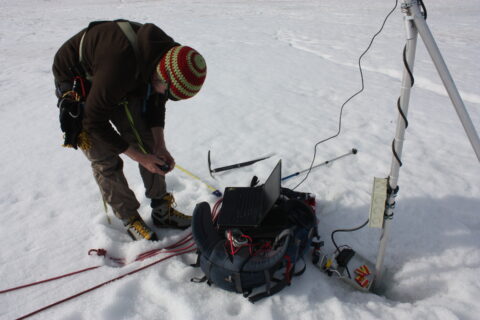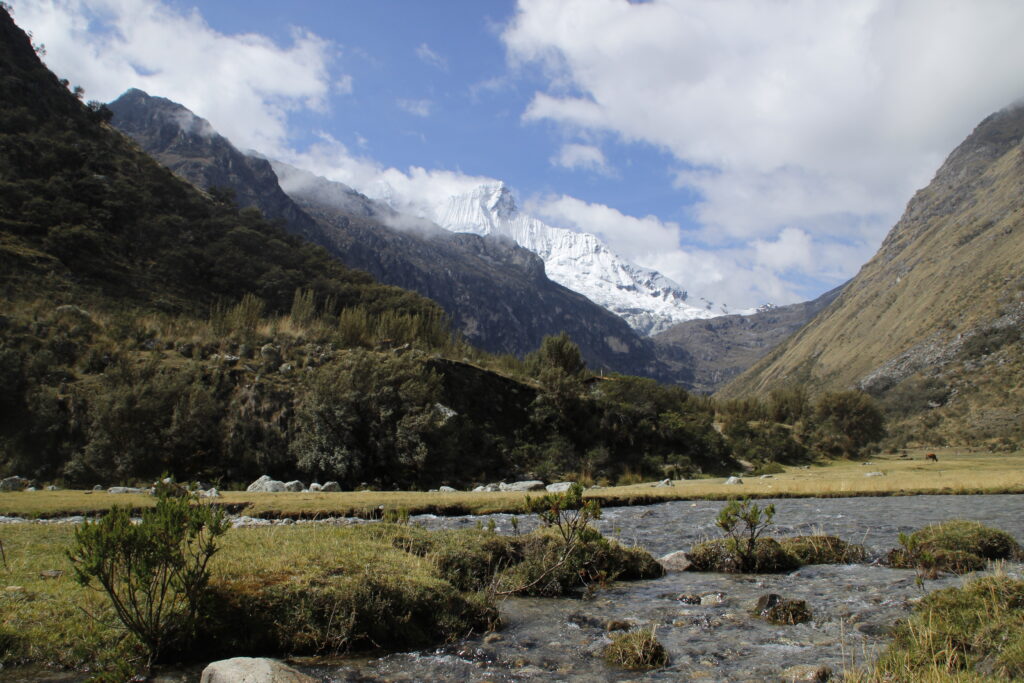Geoscientist receives 1.7 million euros in funding

Deciphering the future of glaciers
A flood wave advances on a mountain village. Water is becoming scarce in a nearby town. What sounds like a disaster movie is reality in the Tropical Andes. And all because the glaciers are shrinking. Dr. Thorsten Seehaus, FAU’s Institute of Geography, is investigating how glaciers have developed over the last 70 years and how they are expected to develop in future. Seehaus has received Emmy Noether funding from the German Research Foundation (DFG) for his research.
Peru’s icescapes: essential for life yet threatening at the same time
The retreat of the icescapes in the Tropical Andes does not only affect the local ecosystems. It also causes water resources to become scarcer, while at the same time increasing the risk of flooding. The two opposite extremes do not rule each other out. “Glaciers are essential sources of water, especially during the dry period,” Seehaus explains. During periods of drought, the ice masses act like a buffer system. “The meltwater is important for irrigation systems in the cities, for mining and for hydroelectric power stations.” Less glacial mass means less stored water for the population to draw on.
At the same time, melting glaciers can cause severe damage, for example if a glacial lake of up to one kilometer in length forms, the dam breaks and a flood wave surges down into the valley. “Disasters such as this are not uncommon in Peru. If we could make accurate predictions, we would be better able to find out where and when new lakes may be formed.” In the project for which he has now been granted funding, Seehaus hopes to discover how glaciers have changed in the past and how they will develop in future.

Historical data for the future
His main aim is to improve methods for measuring and predicting changes in glaciers. He is focusing on specific regions and collecting precise data on them, for example how thick the ice is on glaciers in the region. He is also investigating the connection between receding glaciers and climate change. Seehaus gathers a significant share of his data from satellite images and historical aerial images. It is not only current findings that are important. “If I analyze data from a shorter period of time, the predictions calibrated on the basis of them are less precise. If I look at data from a longer time period, however, I can obtain an accurate prognosis,” Seehaus explains.
Emmy Noether Group becoming established
The project “Past, current and future development of glaciers in the Tropical Andes” requires significant amounts of data, time and manpower. The innovative research project has now received funding of 1.7 million euros. The funding will be mainly used for human resources and expeditions to the Andes, particularly for measuring the thickness of the ice in situ. The Emmy Noether program allows qualified postdoctoral researchers and assistant professors at an early stage in their career to assume responsibility for leading an Emmy Noether Group. The idea behind the program is that the heads of the research groups can qualify for a professorship at a university within a period of six years.
Further information
Dr. Thorsten Seehaus
Institute of Geography
thorsten.seehaus@fau.de